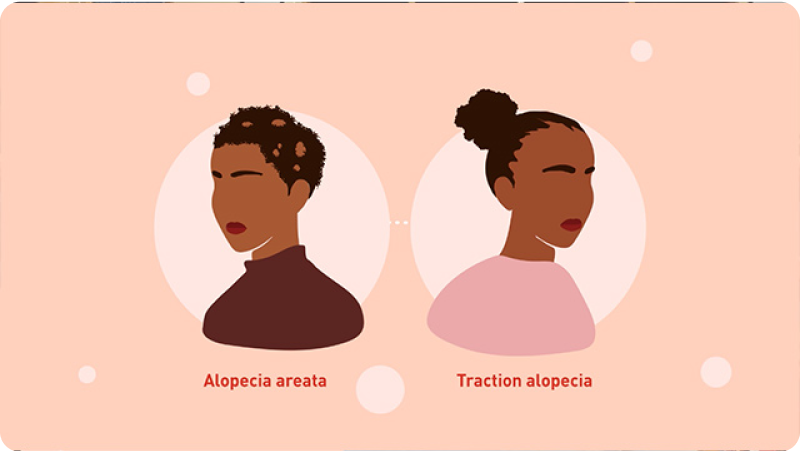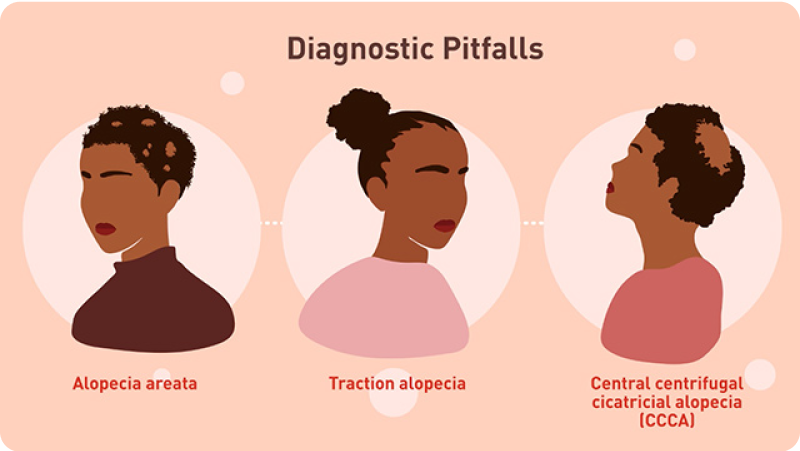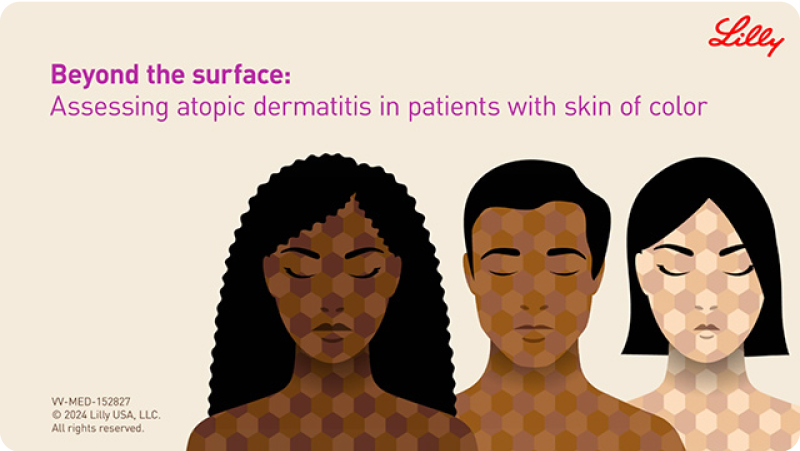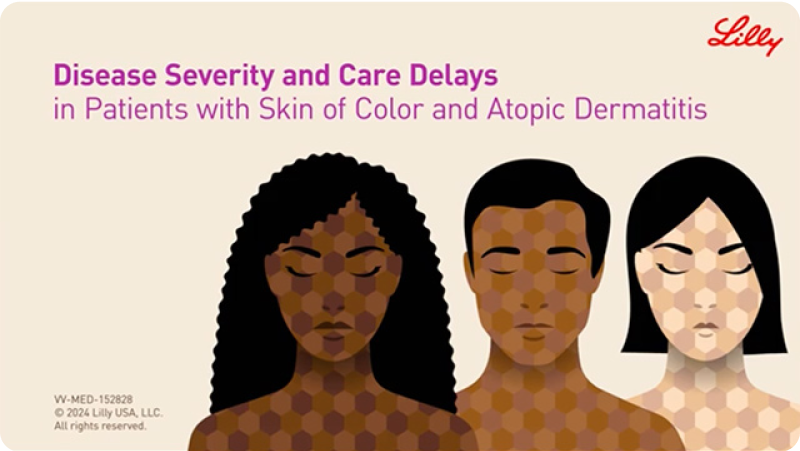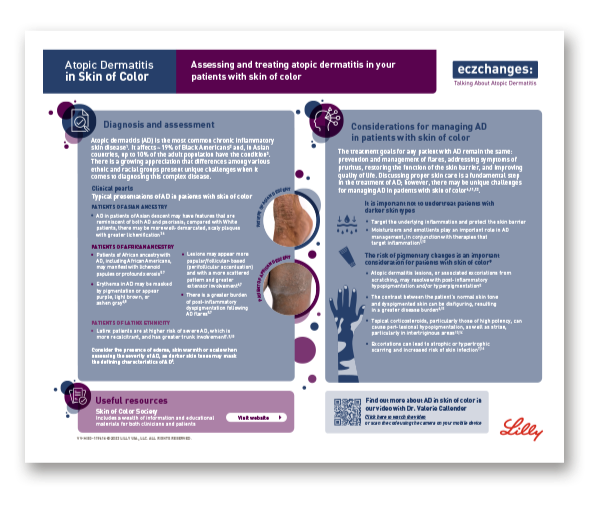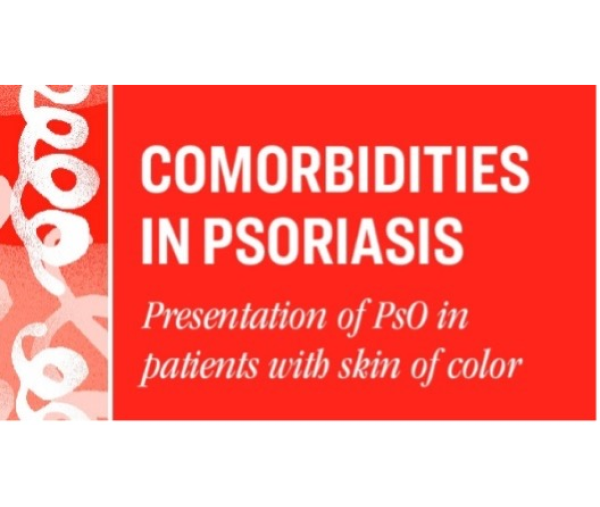This site is intended for healthcare professionals.
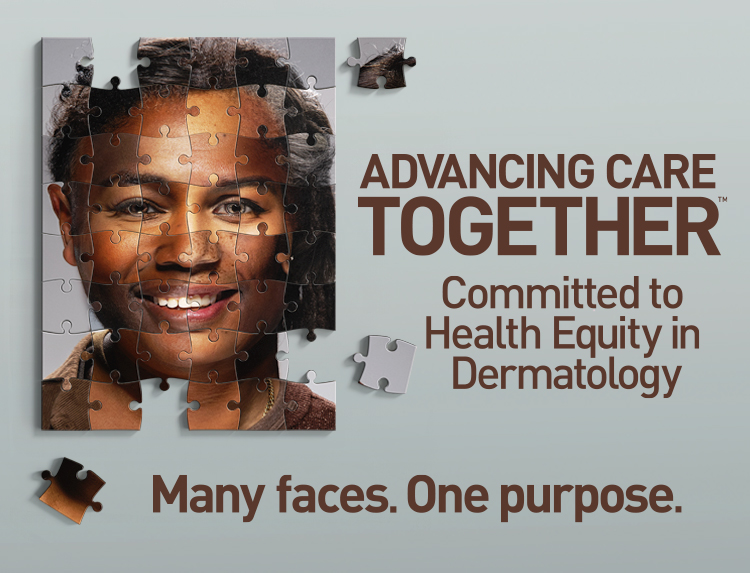
A Partnership Based On Principle.
At Eli Lilly and Company, we are partnering with healthcare professionals to achieve meaningful and measurable change, resulting in greater health equity for people with skin of color. In collaboration with dermatology thought leaders, advocacy groups and communities, we are investing in more diverse clinical research, providing education and helping to empower the voice of patients with skin of color.
AUDIO:
VO: (MALE)
It is estimated that by 2044, more than 50% of the US population will have skin of color.
Yet in many fields, including dermatology, these groups have been underrepresented in clinical research, educational resources, and the healthcare workforce.
Leading to challenges when people with skin of color seek care.
Many may be left underdiagnosed and undertreated.
That’s why we at Lilly are partnering with healthcare professionals, thought leaders, and local communities to improve health equity in dermatology.
Through collaboration, we aim to improve patient care by investing in diverse clinical research and developing validated tools that increase understanding of dermatologic conditions in people with skin of color.
Supporting healthcare professionals with education that enhances understanding of these diseases and the cultural barriers to care for people with skin of color.
Empowering the patient voice so that patients can make their needs known and actively partner to find impactful solutions.
At Lilly, we’re committed to being a trusted resource for dermatologists and related healthcare professionals.
Together we can make a difference with contributions that create meaningful and measurable change in the care of people with skin of color.
Underserved. Underrepresented.
Why It's Important to Understand.
As the profile of the United States continues to change and become increasingly diverse, healthcare professionals, including dermatologists, will see an ever-growing number of patients representing a wide spectrum of skin tones. Here are some important facts to know.
It is estimated that by 2044 more than 50% of the US population will have skin of color.1
People with darker skin tones may have a disproportionately higher prevalence of dermatologic diseases compared to those in other populations and may also present with more severe disease.2


Some skin-related signs can be masked due to skin pigmentation, which can result in delayed diagnosis and care.3
Less than 19% of photographs in dermatology textbooks documented diseases in skin of color.4


47% of dermatologists felt their training, specific to diagnosing dermatologic conditions in people with skin of color, was inadequate.5
These facts underscore the challenges people with skin of color face when seeking care and why many may be left underdiagnosed and undertreated.
Uncovering Gaps in Care
To better understand unmet medical needs and barriers faced by patients with skin of color, a systematic literature review was conducted in partnership with dermatology thought leaders from academia and scientific societies, patient advocacy groups, and others in the healthcare sector. View the below scientific poster to explore proposed care gaps and their root causes to gain a greater understanding of how clinicians can better address the dermatologic care of diverse populations in the U.S.
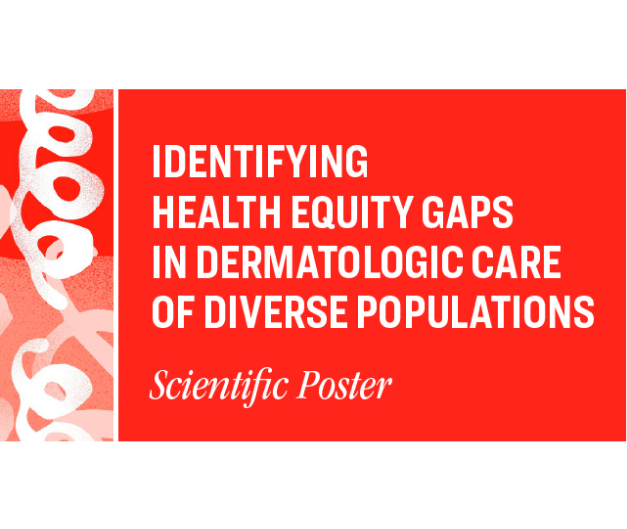
Paving the Way to Healthcare Equity: Gaps in Dermatologic Care of Diverse Populations in the U.S.
Download health equity resourceAddressing Areas of Need
Through uncovering gaps in care, three focus areas of need and multiple solutions to address those gaps were identified, where together, we can make a difference.

Investing in research to increase understanding of clinical management from diagnosis to treatment.
Including diverse clinical trial participants , establishing measurable goals, and creating validated tools and scales to help improve patient care.

Supporting HCPs with educational resources to increase awareness of the journey people with skin of color face and enhance understanding of dermatologic diseases in these patients.
Developing webinars and training modules for HCPs to enhance cultural humility within healthcare, increasing levels of trust and mutual understanding between patient and provider.

Empowering patients to make their needs known and increase understanding of common care challenges, enabling them to actively partner with HCPs to find impactful solutions.
Supporting partnerships and developing programs that deepen understanding and enhance communication, leading to improved outcomes for patients with skin of color.
Together We Can Make a Difference.
By partnering to advance care together, we can make significant contributions to the health equity landscape, fostering better understanding, and instilling trust and confidence between healthcare providers and patients. Our united efforts have the power to make a positive impact for people with skin of color and create meaningful change in the field of dermatology.

Educational Resources
Explore cultural and clinical resources designed to enhance care for patients with skin of color.
References
- Colby S, Ortman JM. Projections of the size and composition of the U.S. Population: 2014 to 2060. Current Population Reports, P25-1143, U.S. Census Bureau, Washington, DC, 2014.
- McKenzie S, Brown-Korsah JB, Syder NC, Omar D, Taylor SC, Elbuluk N. Variations in genetics, biology, and phenotype of cutaneous disorders in skin of color. Part II: Differences in clinical presentation and disparities in cutaneous disorders in skin of color. J Am Acad Dermatol. 2022 Dec; 87(6):1261-1270.
- Shao K, Hooper J, Feng H. Racial and ethnic health disparities in dermatology in the United States. Part 2: Disease-specific epidemiology, characteristics, management, and outcomes. J Am Acad Dermatol. 2022 Oct;87(4):733-744.
- Adelekun A, Onyekaba G, Lipoff JB. Skin color in dermatology textbooks: An updated evaluation and analysis. J Am Acad Dermatol. 2021 Jan;84(1):194-196.
- Buster KJ, Stevens El, Elmets CA. Dermatologic health disparities. Dermatol Clin. 2012;30:53-59, viii.









